When winter comes, garden birds face great difficulties in finding food. Indeed, during this cold season, insects become very scarce, as do fruits. Moreover, frost and snow in certain regions don't improve the situation. To help our feathered friends get through winter, it's highly recommended to feed them by installing bird feeders. You can even make zero-waste feeders yourself using leftover oranges. Easy to make alone, with family or with your children, discover our tutorial for making an orange bird feeder.
Why use oranges?
- When preparing fresh orange juice or eating citrus flesh, we're left with peel waste. We can then reuse them (rather than throwing them away) as containers for bird seed.
- These orange peel feeders can be hung from tree branches to feed certain birds that prefer perching while pecking, such as great tits, robins, house sparrows or chaffinches.
- Making this feeder can also be a fun activity to do with your children, from age 4 upwards. They'll discover what birds eat, why it's difficult for them to find food and can even play observers from the window.
What do I need?
- One or several oranges. You can also use grapefruits or other citrus trees.
- A mix of seeds for garden birds. Opt for a varied and diverse mix to satisfy different bird species' tastes.
- Margarine or unsalted vegetable fat. Be careful not to use butter, animal fat or lard, which are bad ingredients for birds' digestive systems.
- String, cord or ribbon.
- Wooden sticks or thin branches (always with a zero-waste approach).
- Facultative:
How to make an orange bird feeder?
Tip before starting:
Take your margarine out of the fridge one to two hours before your activity to let it reach room temperature. This will give you soft fat that's easy to work with.
Steps to make your orange peel feeder:
1- Cut your citrus in half and empty it (with a knife, spoon or by juicing) to keep only the peel.
2- Pierce your sticks through the orange to form a cross. These pieces of wood will serve as perches for the birds.
3- Then attach the string, cord or ribbon to the sticks to hang the feeder.
4- In a deep plate or bowl, mix the seeds with some margarine. You should get a sticky mixture. This texture will prevent the seeds from blowing away at the slightest breeze.
5- Then fill your half-orange with this mixture.
6- You can also add some berries on top.
7- All that's left is to hang the feeder from the branches of your trees and bushes in your garden.
Tips and advice
- It's advisable to feed garden birds when it becomes difficult for them to find food, generally between October and April, when insects are less present. However, this may vary depending on the region.
- Don't forget that birds also need water in winter. Feel free to put a water dish in your garden. Handy tip: to prevent the water from freezing, you can place a floating ball in the dish. This will limit ice formation.
- It's important to regularly check the condition of the seeds to avoid any risk of mould.
- It's not recommended to use dry bread or rusks to feed birds. Indeed, these dry foods can swell in birds' stomachs and cause serious health problems.
- Don't add salted seeds, like salted peanuts. Salt is strongly discouraged for our feathered friends.
- In spring, when your orange feeders are abandoned by the birds, you can then compost them. However, it's recommended to mix orange peels with other organic matter for balanced compost. Be careful, orange peels shouldn't be placed in a worm compost bin for the wellbeing of the earthworms.

































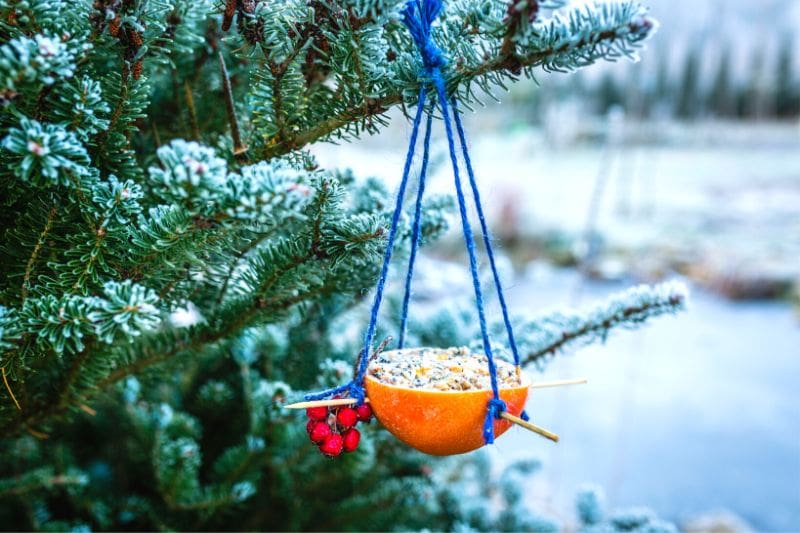
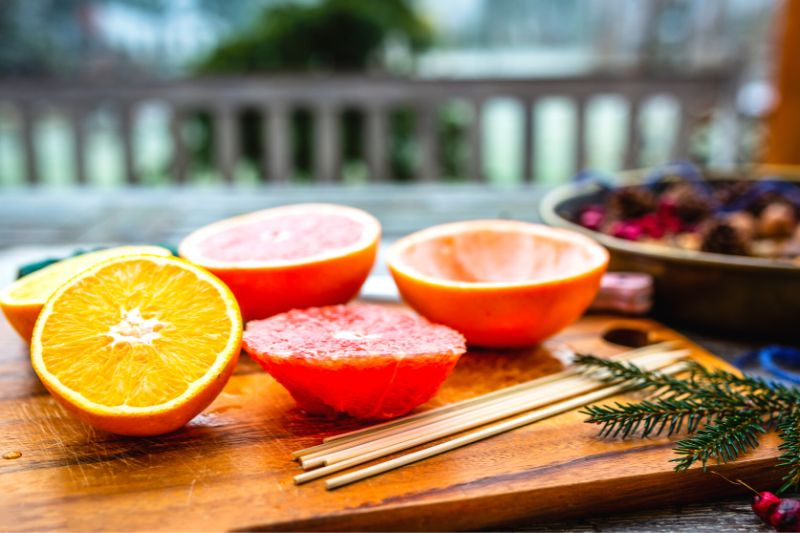
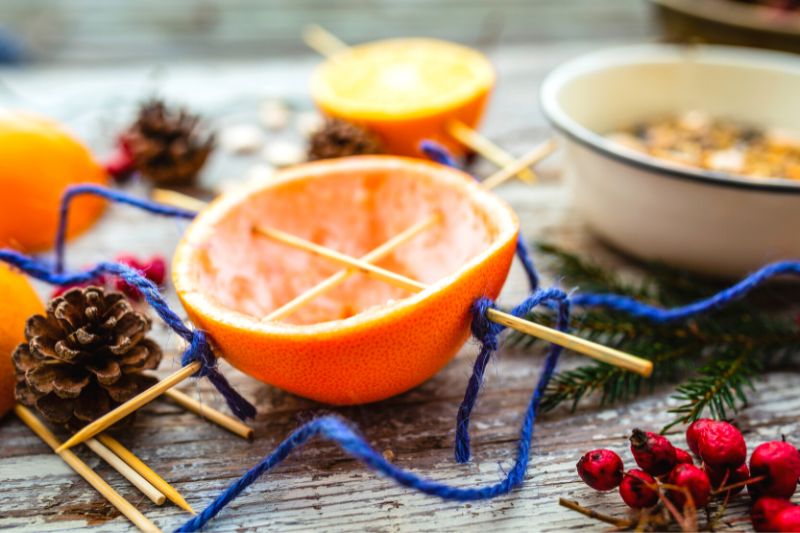
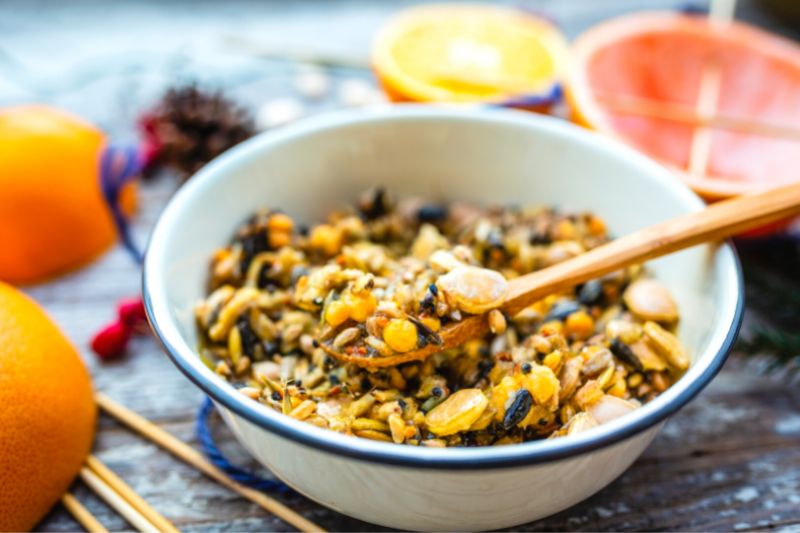
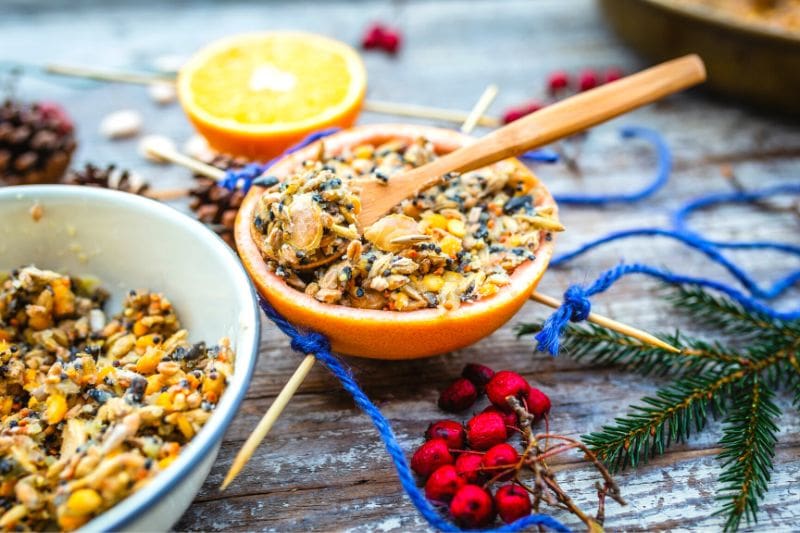
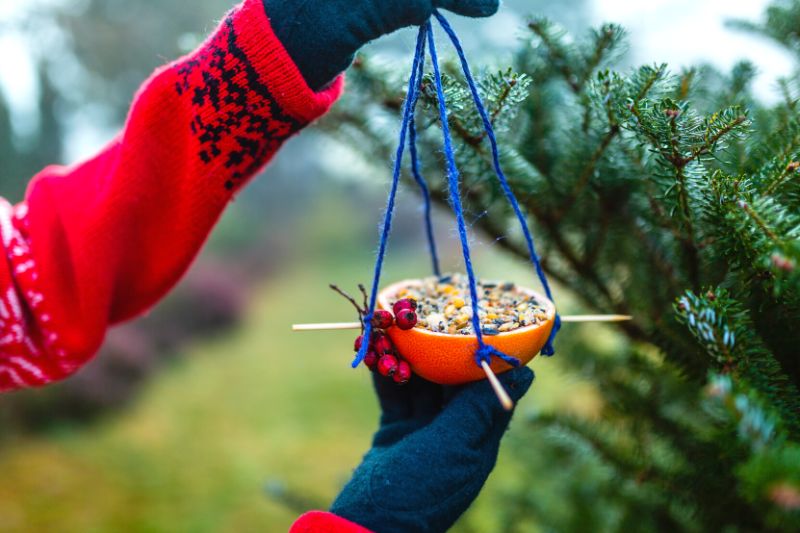

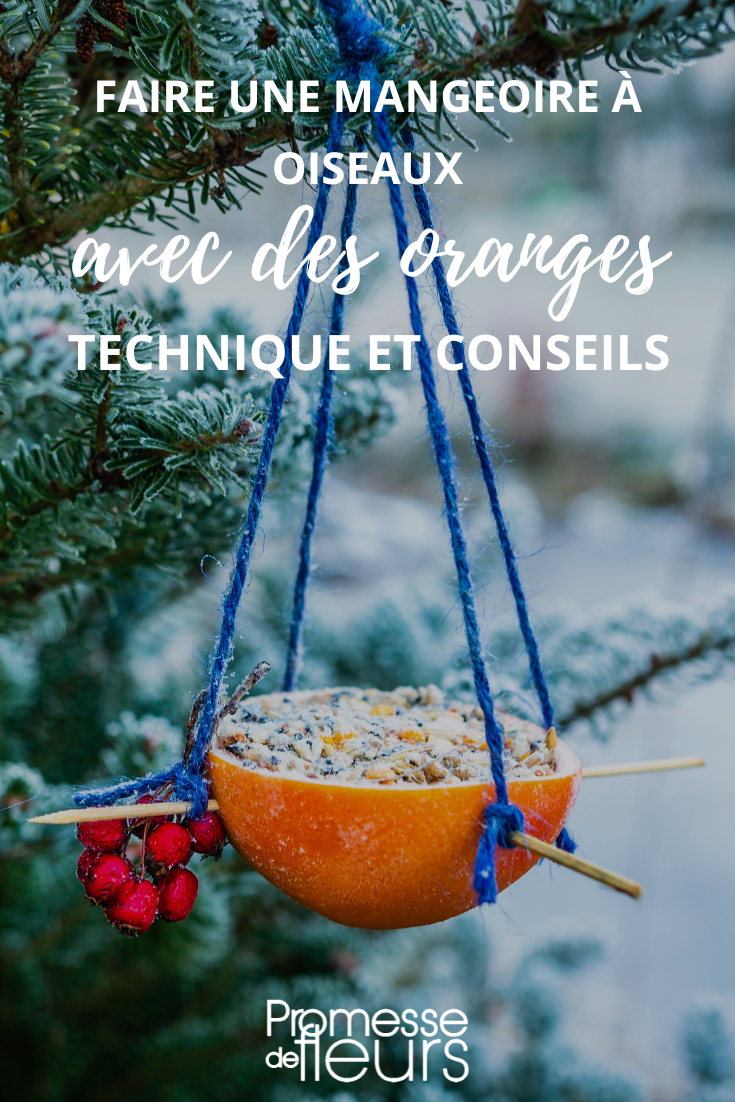
Comments